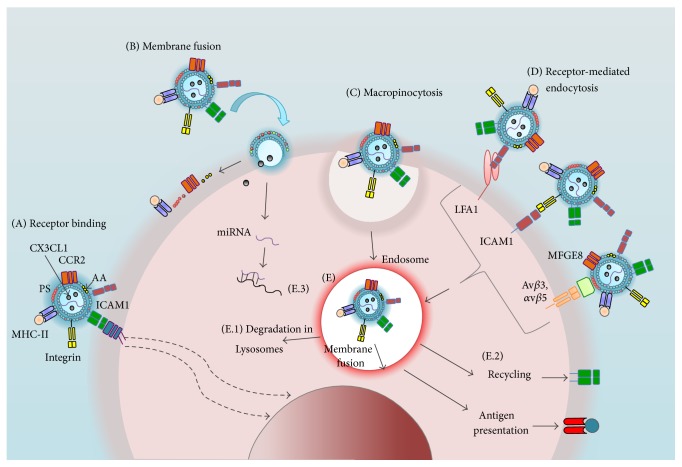Figure 2.
Interaction of MPs with their target cells. (A) MPs can interact with a variety of receptors on a target cell that may or may not lead to intracellular signaling (dashed arrows). Additionally, MPs can transfer their surface components (e.g., arachidonic acid (AA), PS) and internal proteins, receptors (MHC-II, CCR5), and nucleic acids (miRNA) to the target cell by (B) membrane fusion, (C) macropinocytosis, or (D) receptor-mediated endocytosis. In the latter, MPs can engage ligands such as LFA1 (lymphocyte function-associated antigen 1), intercellular adhesion molecule 1 (ICAM1), or through binding to integrins (αvβ3 or αvβ5) by soluble proteins that recognize the PS MFGE8 (milk fat globule EGF factor 8 protein). (E) When antigen-presenting cells internalize MPs, these structures can take different pathways: (E.1) Degradation by the endocytic pathway and subsequent antigenic peptide presentation through MHC-II molecules. (E.2) Their components may be partially recycled to the surface of the target cell, leading to a gain of phenotype and/or function. (E.3) miRNA can modulate gene expression.

